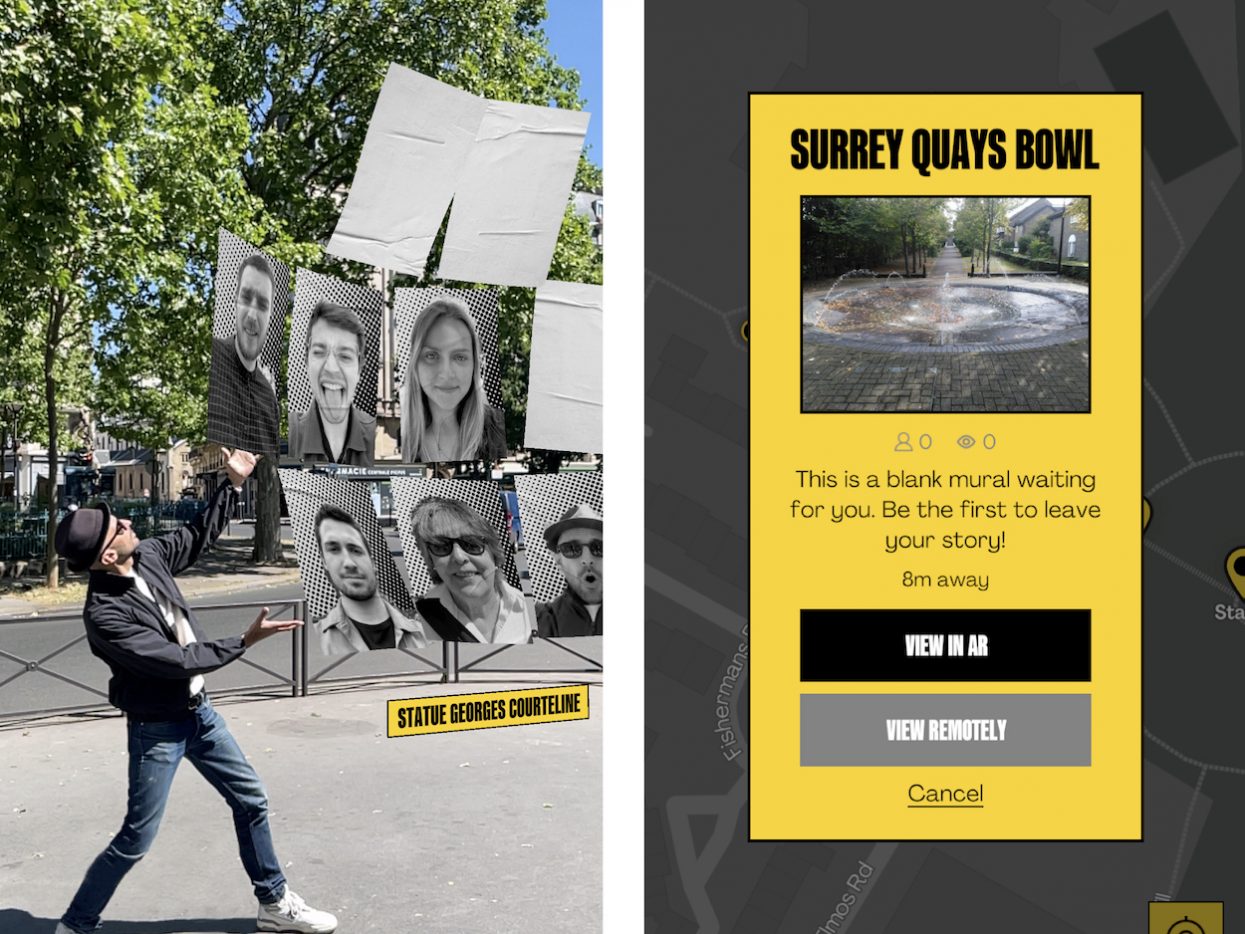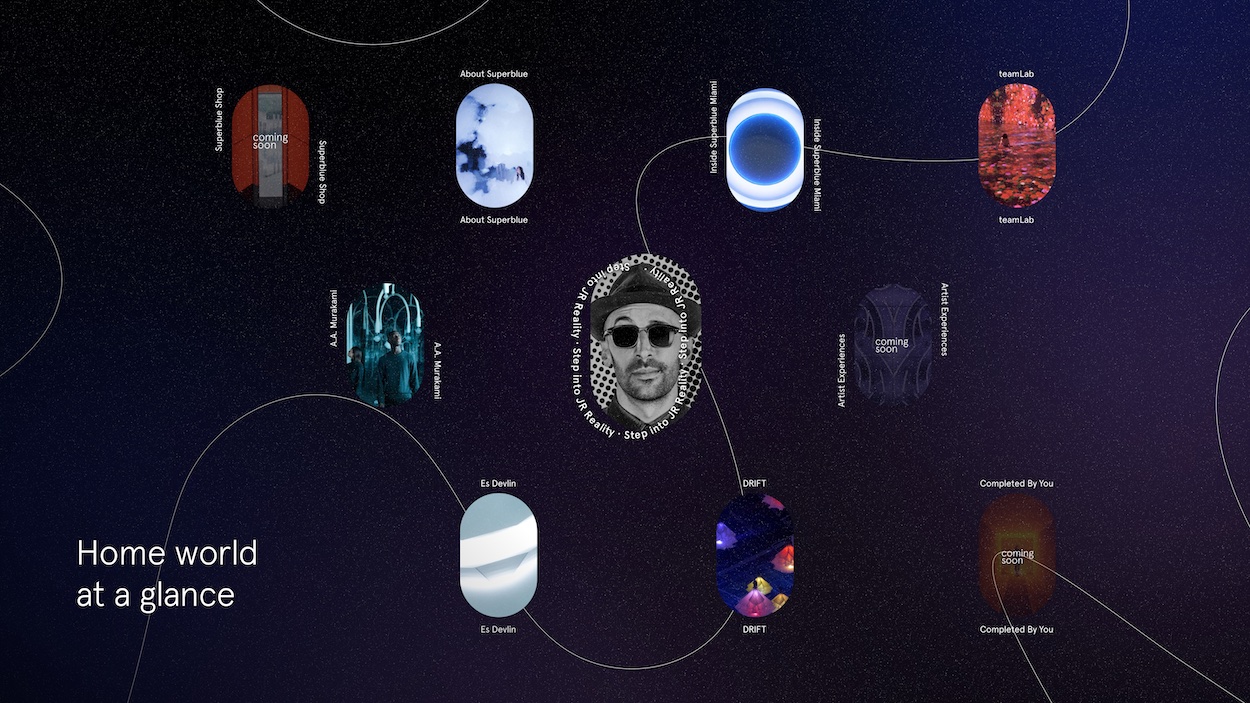When Pokémon Go burst onto the scene, in 2016, most of the 500 million users who downloaded the mobile app within its first year had yet to see anything like its forward-thinking use of augmented reality. The ultra-popular game, developed by Niantic with Nintendo and The Pokémon Company, saw aspiring trainers hunt, capture, and raise the fictional creatures all over the world, creating an early example of what’s now known as the metaverse. Now, Niantic is bringing that winning formula to JR Reality, an AR-based community network launched by Superblue and artist JR that’s billed as the world’s largest participatory art project.
JR Reality’s premise is simple: Anyone who downloads Superblue’s mobile app can share their own firsthand experiences—a portrait, personal photograph, or voice message—of places around their city. Each image gets uploaded to a virtual map that other users can access and explore, making the app a collaborative virtual journal filled with personal stories rooted in physical places. Using AR and Niantic’s Lightship Visual Positioning System, which makes it so that AR experiences can be tethered to a physical location rather than floating haphazardly through a phone’s camera view, the community experiment invites users to go outside, explore their surroundings, and leave virtual messages on a living mural. The first phase kicks off in San Francisco, but will roll out to New York, London, Paris, Miami, and Los Angeles in the coming months.
“Have you ever passed somebody on the street and wondered what their story is? Or looked up through a window and wondered who lives there?” JR asks in a release. “In my latest work, everyone is invited to leave portraits and voice messages attached to a special place. It’s time to go outside and explore, and reconnect with one another and show the world your face again. Together we can tell the world your story and meet the amazing people that live in your city.”


